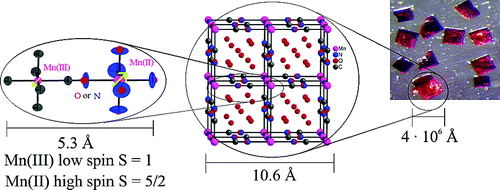-
Spin-crossover in cobalt(II) imine complexes
I. Krivokapic, M. Zerara, L.M. Lawson Daku, A. Vargas, C. Enachescu, C. Ambrus, P. Tregenna-Piggott, N. Amstutz, E. Krausz and A. Hauser
Coordination Chemistry Reviews, 251 (2007), p364-378


DOI:10.1016/j.ccr.2006.05.006 | unige:3202 | Abstract | Article HTML | Article PDF
Whereas there are hundreds of known iron(II) spin-crossover compounds, only a handful of cobalt(II) spin-crossover compounds have been discovered to date, and hardly an in depth study on any of them exists. This review begins with an introduction into the theoretical aspects to be considered when discussing spin-crossover compounds in general and cobalt(II) systems in particular. It is followed by case studies on [Co(bpy)3]2+ and [Co(terpy)2]2+ (bpy = 2,2′-bipyridine, terpy = 2,2′:6′,2″-terpyridine) presenting and discussing results from magnetic susceptibility measurements, X-ray crystallography, optical spectroscopy, and EPR spectroscopy.

